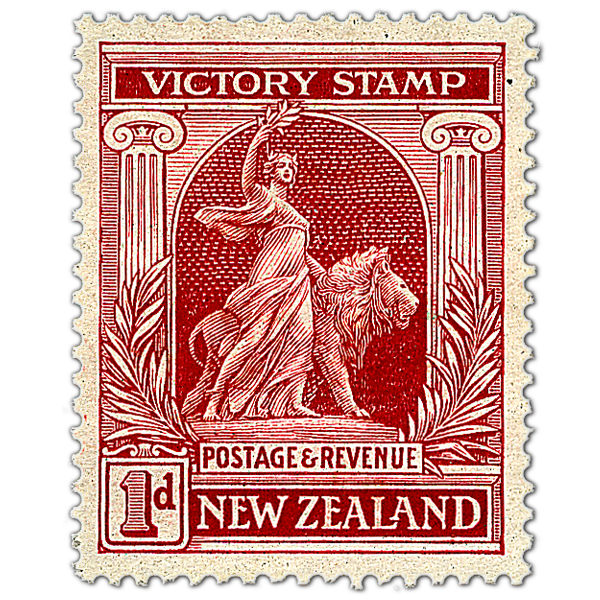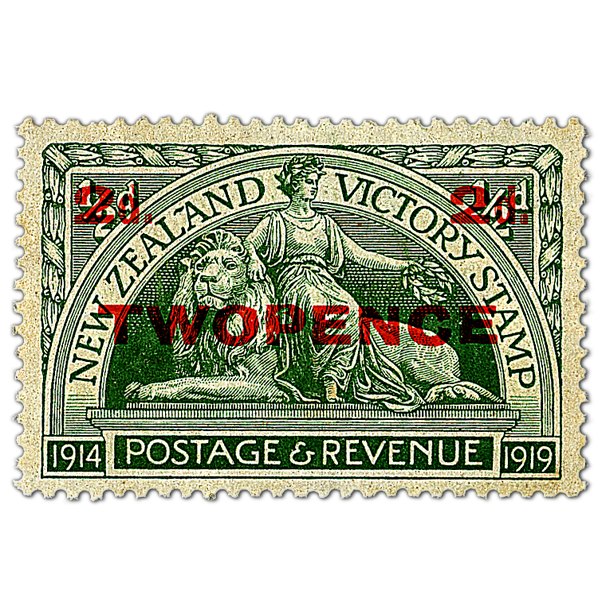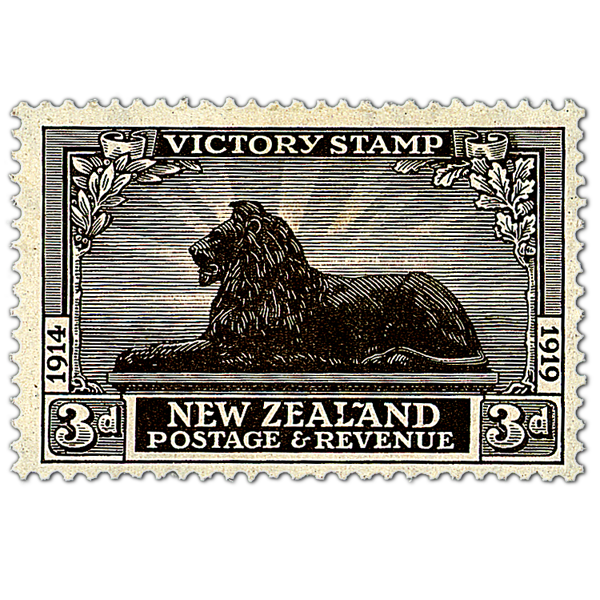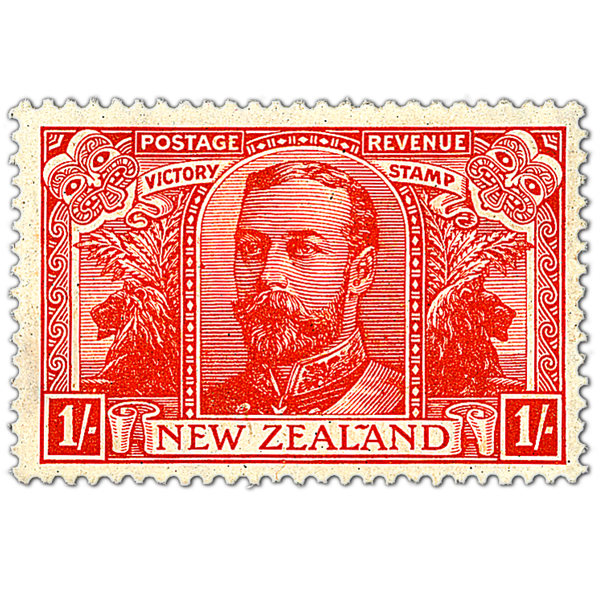Immediately following the cessation of hostilities in November 1918, a request was made to the Post and Telegraph Department to issue a set of stamps to commemorate the declaration of peace.
Issue information
The Postmaster General, Sir Jospeh Ward, approved the suggestion the same month on the 29th November. When designing the stamps, suggestions were made that the stamps should be 'imperial in character with a most modest indication of the country of origin'.
The Victory stamps were placed on sale in London on the 9th November, over two months before they were available in New Zealand, so that local collectors, who were members of the new issue services of dealers in Great Britain, received sets before other collectors could purchase the stamps at the post offices.
This naturally created a feeling of dissatisfaction and there was severe criticism of the action, not only by philatelists, but also by returned soldiers. The Prime Minister received so many protests that an assurance was given that subsequent issues of stamps would not be placed on sale outside the country.
When the stamps were issued the designs were criticised in the New Zealand newspapers because it was considered that only the 1 1/2d could be considered truly typical of the Dominion. Bearing in mind the instructions that had been given, it must be admitted that the artists produced quite satisfactory designs.
At first the Australian authorities refused to recognise the stamps as valid. A minor trans-Tasman controversy broke out when the Australian postal authorities clapped a surcharge on letters from New Zealand bearing Victory stamps, citing obscure provisions of the Convention of the Universal Postal Union. The Australians claimed that through this stamp issue New Zealand was not only ‘advertising the country’ (stamps weren’t supposed to do that), but also asserting that it had ‘in particular contributed to the victory of the Allies. It is not the business of any Government to cater for stamp dealers abroad.’ But many other countries had also issued Victory or Peace stamps, and the Australians soon backed down.
Acknowledgments
New Zealand Post would like to acknowledge the following for their assistance and guidance in bringing together this stamp issue:
Historical iformation included on this page sourced from The Postage Stamps of New Zealand published by the Royal Philatelic Society of NZ. Their web site offers further information useful to those interested in the stamps and postal history of New Zealand. Link: https://www.rpsnz.org.nz/
Product Listing for Victory
| Image | Title | Description | Price |
|---|---|---|---|
 |
Single Stamp |
Single 1/2d 'Green' gummed stamp. British Lion representing the British Empire, with the allegorical figure of Peace. |
1/2d |
 |
Single Stamp |
Single 1d 'Red' gummed stamp. British Lion representing the British Empire, with the allegorical figure of Peace. |
1d |
 |
Single Stamp |
Single 1 1/2d 'Brown - Māori Warrior with elaborate face tattooing' gummed stamp. In his hair is worn the tail feathers of the huia which were highly prized and worn as a badge of rank. The whakakai or ear pendant is the type made from shark's teeth and was also highly valued by the Māori. |
1 1/2d |
 |
Single Stamp |
Slingle 2d 'Overprinted on 1/2d 'Green' gummed stamp. British Lion representing the British Empire, with the allegorical figure of Peace. In 1920 a postage rate increase resulted in little demand for 1/2d stamps. As over 12 million 1/2d Victory stamps were still in stock it was decided to overprint the stamps with a 2d denomination. The stamp was issued in March 1922. |
2d |
 |
Single Stamp |
Single 3d 'Chocolate - British Lion, as for 1/2d and 1d stamp' gummed stamp. This lion was copied from the famous figures flanking Nelson's Column in Trafalgar Square, London, which were so familiar to thousands of New Zealand soldiers during the war. |
3d |
 |
Single Stamp |
Single 6d 'Purple' gummed stamp. This design symbolised 'Progress' as attendant upon 'Peace'. |
6d |
 |
Single Stamp |
Single 1s 'Orange' gummed stamp. George V flanked in the top corners of the stamp with carved representations of human faces or wheku in Māori. |
1s |
British Lion representing the British Empire, with the allegorical figure of Peace.
Technical information
| Date of issue: | 27 January 1920 |
|---|---|
| Designers: | Thomas De La Rue, England |
| Printers: | Government Printing Office, New Zealand |
| Stamp size: | 1/2d, 2d, 3d and 1s : 36mm x 24.5mm; 1d : 24.5mm x 30mm; 1 1/2d : 30mm x 24.5mm; 6d : 24.5mm x 36mm |
| Sheet size: | 1/2d, 2d, 3d, 6d and 1s : 140 stamps per sheet; 1d and 1 1/2d : 160 stamps per sheet |
| Process: | Surface printed - Typography |
| Perforation gauge: | 14 |
| Paper type: | De La Rue, chalk surfaced, NZ and star watermark. |

